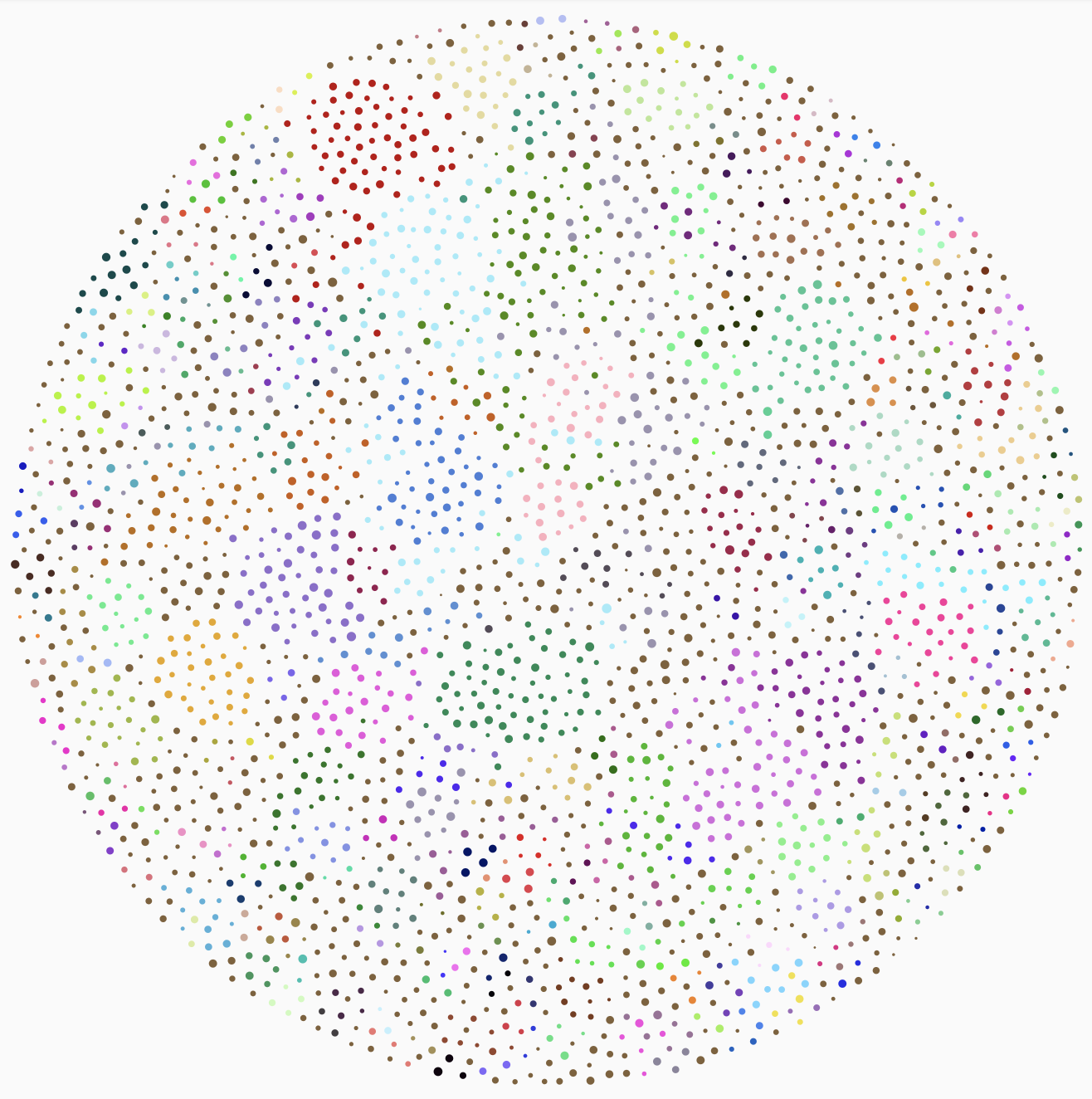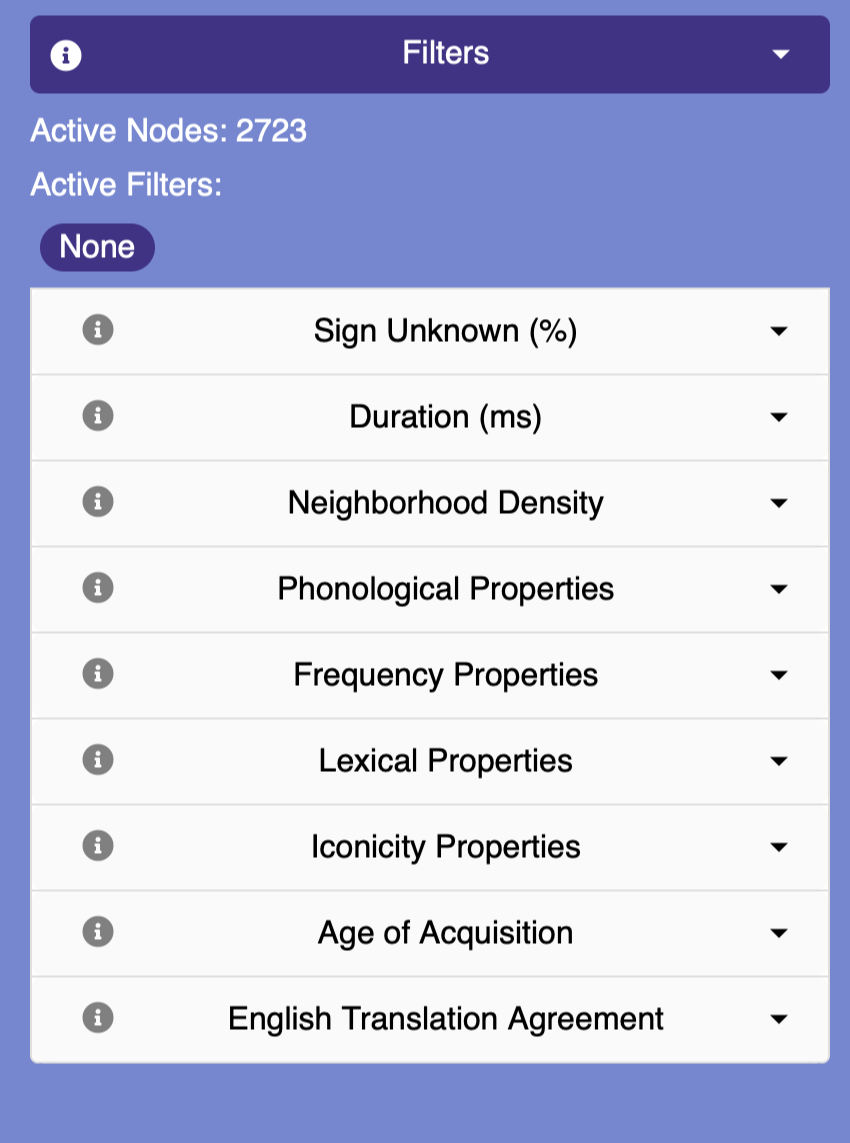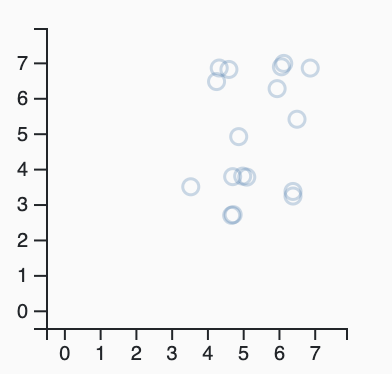
In this visualization, each sign is represented as a node. Higher frequency signs have larger nodes while lower frequency signs are smaller.
Signs are arranged spatially based on phonological relatedness. The ASL-LEX 2.0 visualization uses 16 phonological features to determine relatedness; signs that share more phonological features appear closer to each other than signs that share fewer features. Signs that are very closely related—phonological 'neighbors', differing by at most 1 phonological feature—are connected to each other by an edge. Edges appear when hovering over a node. Nodes are roughly colored roughly by phonological neighborhood.
Note: Due to the complexity of the visualization, nodes will not always appear exactly as described above. For example, the distance between two nodes may not exactly reflect their phonological similarity as their position in the visualization must optimize their distance to all other nodes. Similarly, nodes may belong to more than one phonological neighborhood but will receive only one color.

 ) will allow you to pan around the visualization.
) will allow you to pan around the visualization.


